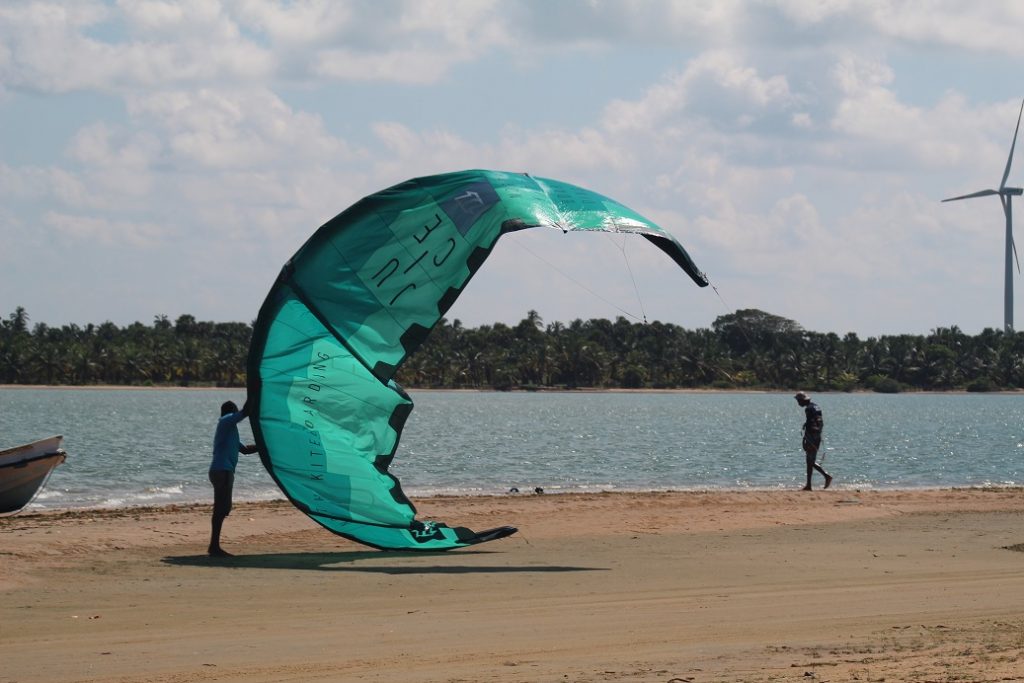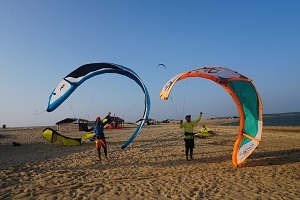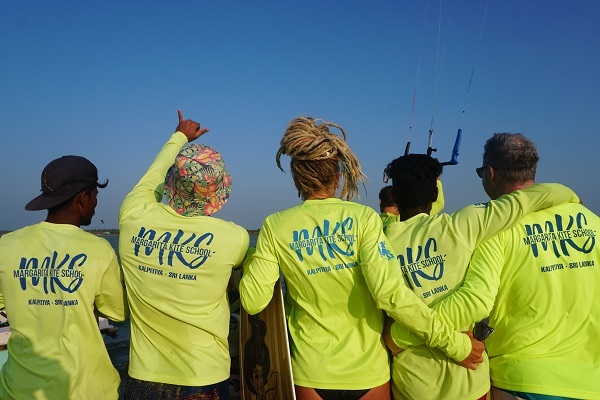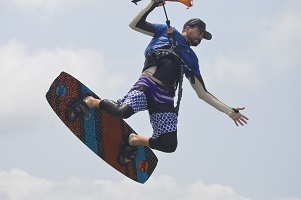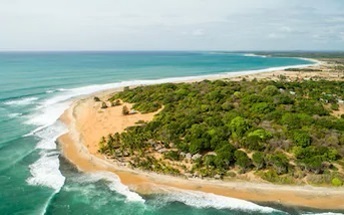The ultimate guide to kitesurfing in Sri Lanka
Top kite spotsKITESURF SRI LANKA: SPOT GUIDE TO ASIA’S KITE CAPITAL
Strong wind, flat water and tropical vibes? That’s what Sri Lanka kitesurfing is all about
Sri Lanka boasts itself as a premier kitesurfing haven, offering a trifecta of delights: robust winds, serene flat waters, and vibrant tropical ambiance. Renowned globally, Sri Lanka stands out among kitesurfing destinations for its diverse array of kite spots, catering to both novice and seasoned riders. Whether you’re seeking thrilling rides or tranquil lagoons, Sri Lanka has it all.
Beyond kitesurfing, Sri Lanka captivates visitors with its UNESCO heritage sites, breathtaking landscapes, and delectable local cuisine. Engage in a myriad of activities, including surfing, trekking, and climbing, amidst the island’s stunning backdrop.
Sri Lanka also got ranked as one of the best kitesurfing destinations worldwide. Some of the factors which make it such a great place for kitesurfing include:
> Flatwater in many lagoons.
> Steady wind conditions throughout the year.
> Perfect for beginner and advanced kitesurfers.
> Rich local culture and tons of heritage sites.
Whether a novice or a seasoned pro, Sri Lanka promises an enriching kitesurfing experience amidst its picturesque settings and warm hospitality.
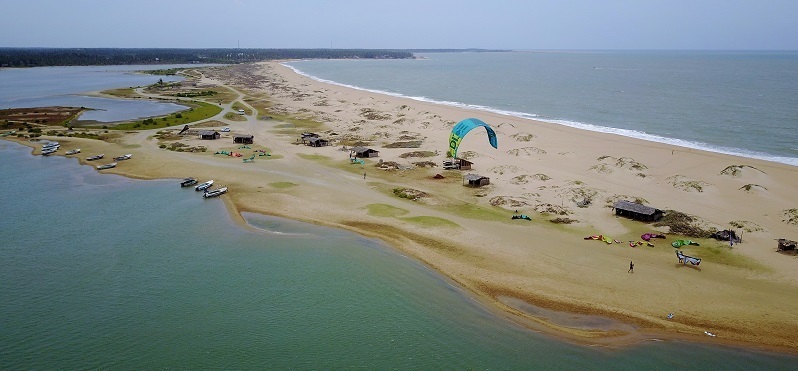
Season
The primary kitesurfing season in Sri Lanka spans from May to October, offering consistent and reliable winds ideal for enthusiasts of all levels. During this peak season, the average wind speed ranges between 18 and 30 knots, providing optimal conditions for kitesurfing.
Another optimal time for kitesurfing in Sri Lanka is from December to March. Winter in Kalpitiya is particularly festive due to consistent winds. Although the wind speed slightly decreases during this period, it remains steady at 14 to 20 knots
When discussing potential kitesurfing spots in Sri Lanka, Kalpitiya stands out as the most renowned. This quaint fishing village boasts lagoons, shallow waters, and numerous nearby islands. Additionally, the area hosts numerous kitesurfing schools and resorts, making it an ideal destination for kitesurfing enthusiasts.
Now, let’s explore our list of kitesurfing locations in Sri Lanka!
List of some of the best Sri Lankan kitesurfing spots
Down here, we have created an ultimate list to show you some of the best kite spots in Sri Lanka. Most of the kite spots are on the west coast; however, there are exquisite beaches to kite on the south coast and east coast as well!
1. Kalpitiya lagoon
Kalpitiya stands out as Sri Lanka’s premier kite spot, offering ideal conditions for kitesurfing enthusiasts. The lagoon provides opportunities for kiting during both summer and winter seasons. Notably, the winter season boasts steadier winds compared to the slightly gustier conditions from May to October, attributed to wind direction variations.
During winter, winds originating from the ocean ensure exceptional stability for kiting activities. Despite these differences, both seasons offer excellent kiting experiences in Kalpitiya.
Additionally, Kalpitiya serves as an excellent learning ground for beginners due to its proximity to numerous kitesurfing schools. Organizing kite lessons is relatively straightforward in this area, making it an ideal destination for novice kitesurfers to fall in love with the sport
Recommendation: there are some sea shells in the lagoon, so be ready to protect your feet with some water shoes, especially if you are a beginner! It is not very common to get hurt, but if you are unlucky, you don´t want to step in one of these sharp stuff and end up in the hospital!
2. Ippantivu island
Ippantivu Island, also known as “Mini Vella,” remains relatively undiscovered in Sri Lanka, offering an exceptional and authentic kitesurfing experience. Its lesser-known status means you’ll encounter fewer kite enthusiasts, making it an appealing choice for those seeking tranquility and unspoiled surroundings.
Located within Puttalam Lagoon, Ippantivu Island is accessible by boat from Kalpitiya, approximately a 30-minute journey. While smaller than Vella Island, Ippantivu benefits from stronger summer winds, attributed to the venturi effect.
Recommendation: Because of its location, there is a venturi effect that makes Ippantivu a very windy kite spot, especially if you go to the choppy area between the island and the Dutch Bay. You will feel how strong is the wind at this point in the middle of the channel!
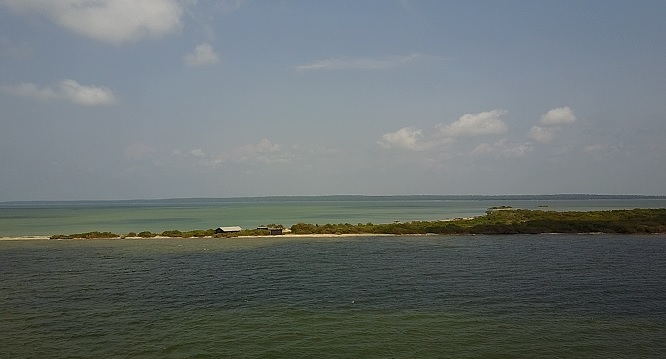
3. Vella Island
Vella Island is among one of the most known kite spots in Sri Lanka and probably the best. This island is located in front of the Wilpattu National park and is only an hour away by boat from Kalpitiya. But what makes Vella Island stand out from other kitesurfing spots? It is the vast sand bars, super flat water, and steady wind which make the perfect kitesurfing conditions!
And when you take the boat ride to Vella, it will be an adventure in itself because it is located just in front of the Wilpattu National park.
The reputation of this kite spot hurries ahead! Vella presents an authentic paradise for kitesurfing-lovers! We recommend coming here with an intermediate kite level to take full advantage of this trip because due to the very steady and strong wind at Vella, it would make it a bit more difficult for beginners.
Recommendation: Wind is entirely offshore, which means that it is not suitable for beginners. In Vella island, the wind is stronger than in the Kalpitiya lagoon (around five more knots), so be ready to bring your smaller kites! And if we talk about the best time to visit Vella Island, it is during the summer season when the wind remains steady and consistent.
4. The Dream spot
The Dream spot is located in the Dutch Bay, and it is around 15-20 minutes away from Kalpitiya. Unlike other kite spots in Sri Lanka, you can kite in the Dream Spot all year round due to its consistent winds. If we look at some other kitesurfing spots in Sri Lanka, like Navy Point, you can go only in the wintertime because it is too choppy in the summertime. But when we talk about “The Dream spot,” you do not have to worry about seasons!
The Dream spot has flat water all year-round, along with a vast and spacious room for surfing. Another major advantage of the Dream Spot is that you will find flat water, which makes it ideal for beginners and experts alike!
5. Kappaladi lagoon
This small lagoon is perfect for freestyle and is also an excellent spot for learning to kitesurf as well. On top of that, the wind is also very steady, which allows the kitesurfers to ride for a long period of time without any interruptions. And since the conditions are so perfect in the Kappaladi lagoon, it is ideal for beginners too.
If you are in the Kalpitiya, It is worth making a one-day trip to the Kappaladi lagoon, especially if you like to go downwind. During the summer season, the wind is usually very steady, which also makes it easy for those who want to learn kitesurfing!
Recommendation: Unfortunately, this lagoon is relatively small and can become quite challenging when there are 20 or more kiters. For advanced riders, the optimal time to kite in the Kappaladi lagoon is from 12 to 3 pm, coinciding with breaks taken by other resorts and schools. During this period, the lagoon is less crowded, offering ideal conditions for kiting.
On the other hand, the winter season is not ideal for kitesurfing in this area due to unfavorable wind directions.
6. The Navy Point
This kite spot is located at the end of the “Duch Bay” and is one of the best spots during the wintertime. It takes around 40 minutes to get to Navy Point from Kalpitiya lagoon, which is one of its attractive features.
Like Ippantivu island, this is a flat water spot from December to March, and during summertime, it is very choppy, that is why it is worthy of going only in the wintertime. Unfortunately, every year the sandbar at Navy point is disappearing more and more due to coastal erosion; therefore, it will become smaller with time until it completely disappears.
However, that’s going to take a lot of time which means that you can still plan and take a trip to Navy Point and enjoy one of the unique & unforgettable kitesurfing experiences!
Recommendation: Navy Point is the perfect starting point for a downwind trip to the Dream spot in the winter season.
UPDATE 2024
Unfortunately, the sandbar at Navy Point is progressively diminishing each year due to coastal erosion. Consequently, it will continue to shrink over time until it eventually vanishes completely.
7. The Donkey Point
If you are a wave raider, this is the best kite spot in Kalpitiya to do kiteboarding in the ocean. The Donkey Point can be reached by car /tuk-tuk or motorbike from Kalpitiya because it is located in a cape approximately 10 km south of Kalpitiya. Once you’ve reached Donkey Point, you can find very steady and strong winds during both kitesurfing seasons in Sri Lanka.
The wind is very stable, and it is cross-onshore, which turns it into a safe place to do kitesurfing in Sri Lanka, although it is not a spot for beginners due to the conditions of the ocean. But for those who love wave riding, there is no spot better than this one in Sri Lanka!
8. Arugam Bay
Arugam Bay, situated on the southeast coast, is primarily renowned as a surfing destination. However, on windy days, it also offers opportunities for kitesurfing. While Arugam Bay features excellent waves for surfing, there are occasional days with favorable wind conditions for kiting.
During the summer season, particularly in August and late July, Arugam Bay experiences strong winds, reaching up to 25 knots on some days. However, the average wind speed typically ranges from 14 to 18 knots. It’s important to note that wind consistency varies, and offshore winds are not uncommon.
Due to these conditions, Arugam Bay is more suitable for experienced kitesurfers. Beginners should ensure the availability of a rescue boat before attempting kitesurfing.
9. Adam´s bridge (Mannar)
The Adams Bridge comprises several small islands that once connected India and Sri Lanka. Over time, erosion has reduced it to a series of islands. Despite this, its expansive beaches and calm waters make it an excellent kitesurfing destination in Sri Lanka. However, it’s essential to note the limited infrastructure and facilities, which might deter some tourists. Yet, for adventurous souls seeking a unique Sri Lankan experience, the Adams Bridge is a must-visit destination.
10.The southern coast of Sri Lanka
On the southern coast of Sri Lanka, you’ll discover its most picturesque and popular beaches, offering ample kitesurfing opportunities from January to April, particularly in the afternoons. While the wind may not be as reliable as in Kalpitiya, the region compensates with its stunning beauty, vibrant local culture, delectable cuisine, and gentler winds.
Typically, wind speeds average around 10-16 knots. The best beaches along the southern coast include Tangalle, Matara, and Ahangama. During the summer season, intense winds from the south are not uncommon. However, it’s essential to note that conditions differ from those in the north due to rougher ocean conditions.
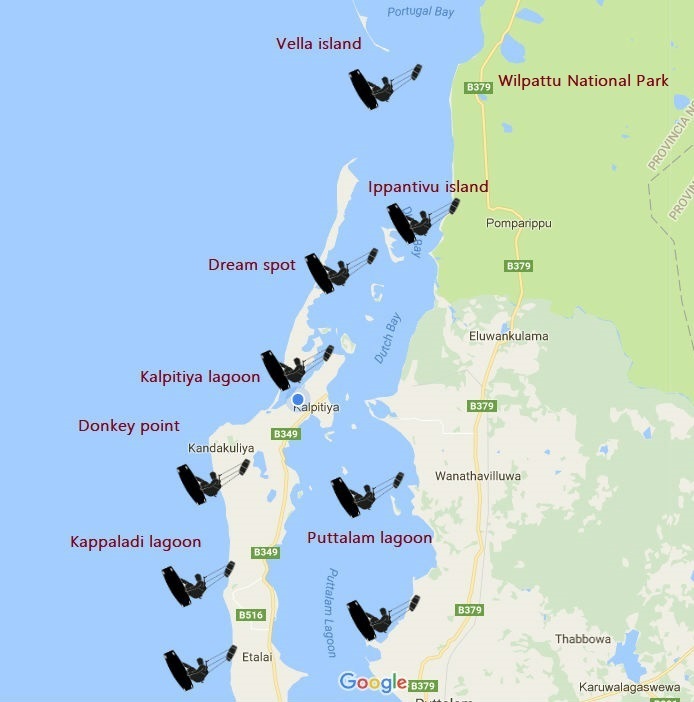
FAQs
Still have questions related to kite spots in Sri Lanka or just something related to kitesurfing Sri Lanka? Then take a look below:
What is the most suitable kitesurfing equipment when traveling to Sri Lanka?
If you travel during the winter season, kites ranging from 12 to 16 meters are recommended. In the summer season, which spans from May to September, kites between 7 to 10 meters are ideal, depending on your weight. Occasionally, wind speeds during the summer can reach up to 30 knots, so it’s advisable to be prepared for varying conditions.
During the winter season, the wind is consistently around 14-18 knots, making smaller kites (less than 12 meters) preferable.
What do I need to bring?
The climate in Sri Lanka is hot, and a wetsuit isn’t necessary due to pleasant water temperatures. Instead, ensure you pack high SPF sun cream (up to 50) to protect against sunburn. Additionally, water shoes or booties are recommended for kitesurfing in Sri Lanka.
How do I get from the airport to Kalpitiya?
For travelers planning a kitesurfing trip to Sri Lanka, arranging a private vehicle is a convenient option. From Negombo airport, which is approximately a 3-hour drive from Kalpitiya, taxis and shuttles are readily available outside the terminal.
A private vehicle typically costs around 70 euros and provides the fastest and most comfortable transport option, particularly if you’re carrying kiteboarding equipment. Alternatively, public buses are available from Negombo to Puttalam, with a transfer in Palavi town for onward travel to Kalpitiya.
